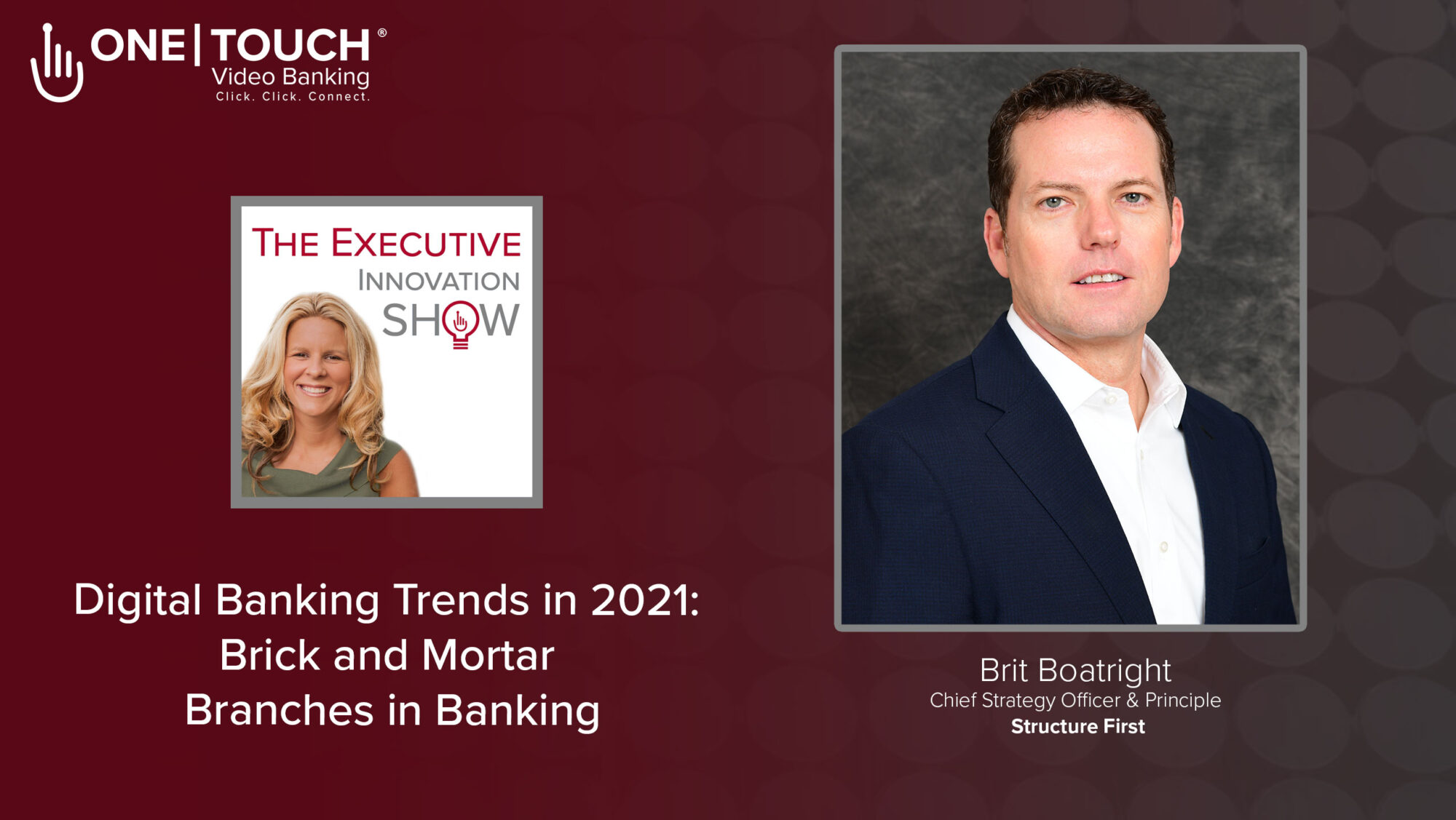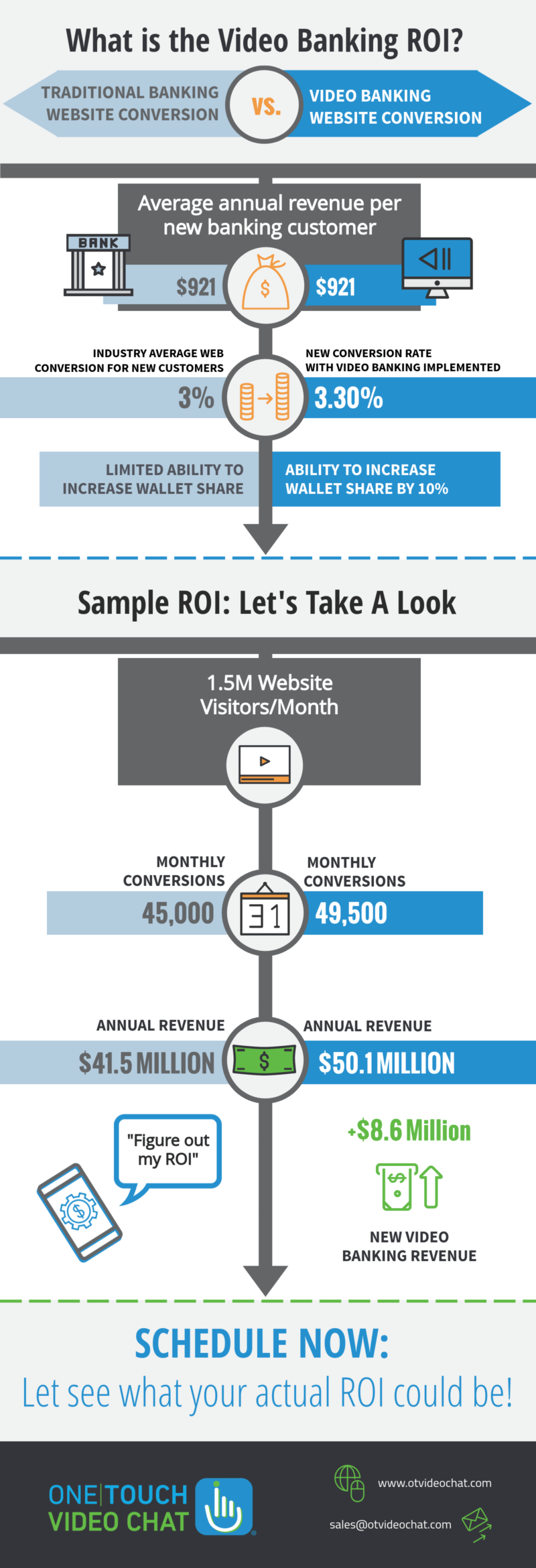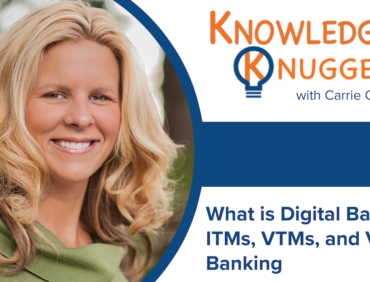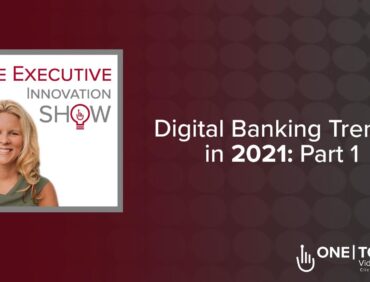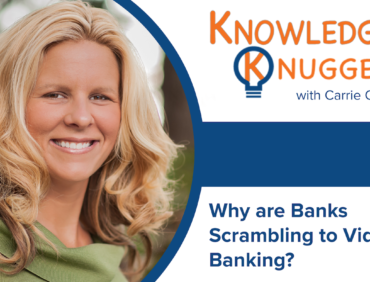Digital Banking Trends in 2021: Brick and Mortar Branches in Banking (Part 2)
Today’s Executive Innovation Show is brought to you by One Touch Video Banking. We’re going to be talking about brick and mortar branches in banking and digital banking trends in 2021.
Our guest on the show today is Brit Boatright, CCIM is a Principal and Chief Strategy Officer of Structure First. where he guides financial institutions through the design and construction of new branches, HQs, and branch transformations. He is a former community bank president with over 27 years’ experience in the industry.
We are going to be talking about a hot topic that is on everybody’s mind. The world of banking has just really changed dramatically since the pandemic and banks overnight have had to embrace digital bank transformation to keep their employees and customers safe, all while trying to run normal business of acquiring new customers and servicing their customers.
How does the pandemic change the strategy for Brick and Mortar Branches in Banking?
In Part 2 of Digital Banking Trends in 2021, we are going to talk about the changes in branch design layout due to the pandemic. How does this change and intersect with the new virtual world with technology that we now live in? How does this change the “brick and mortar branches in banking” post pandemic?
In the pre-pandemic world, banks were spending millions of dollars on branch transformation making branches more open and inviting trying to get customers to spend more time there. Also, lots of banks and credit unions were redefining their strategies on mega branches, smaller footprints, and making reducing staff per location.
Then the pandemic hit and changed the open floor plan designs with new requirements for social distancing and branches having to function virtually.
How are bank executives thinking about branch re-design post-pandemic vs. pre-pandemic?
Brit explains that he’s getting a lot of those questions about this and outlines how the requests for building new branches and redesigns have changed. Pre-pandemic was all about getting the client or the member into the branch and the personal relationship. And then as you said, during the pandemic, it was trying to keep everybody out of the branch. And so as we’re rounding the corner on that and hopefully getting close to, to the life after a pandemic. The brick and mortar branches in banking have experienced changes during the pandemic and a lot of things will stay. We’ve helped design probably a dozen branches in the last six months and some of the things that are different are here to stay, But the main underlying theme that I would say as a former community bank president is we’ve got to keep some type of personal relationship, some type of personal touch.
If we allow everything to go digital, it’s going to be tough for the smaller community banks and credit unions to compete with the megabanks because the technology is expensive. And so it’s a real balancing act. You want to keep that level of personal service and personal touch, but still distancing and doing it in a safe way for your employees and your members and customers.
What are a few things we’re seeing in digital banking trends of 2021 that are hot of the press in branch design?
- interactive teller machines. The ITMs can be a game-changer. During the pandemic, we had clients that were running their ITMs, with tellers from home, which I never anticipated. But it can be a very expensive solution. Other solutions are not as expensive, like video banking.
- V-shaped pods can help when considering moving from your traditional teller line to a pod. One of the chairmen of that bank was concerned that the pod was too close. We talked about actually a pod is further apart than your typical walk-up teller. And he reminded me appropriately, yes, that I have eight teller lines and I’m only using three of them. So I don’t have tellers in every space, which is something that all, banks are dealing with. What is a V-Shaped pod? The bankers are working back to back using the same recycler. It puts a good bit more space between the customer as they’re standing at the pod. It’s a pretty basic solution but opens some cool design elements instead of your typical oval pod.
- Tech bars have historically no one ever really knew what those were for or properly utilized them. And so when I ran my bank, I never gravitated to those cause I wasn’t sure what would my customers be using that for? So I never really was a big fan of it personally, but we renovate a lot of branches or refresh branches where we see a lot of them. And when I asked folks, we’re not using them much before the pandemic, and certainly weren’t using it during the pandemic. These are being repurposed so when your client or member opens an account to make sure when they leave, they understand, on their phone how to use online banking. Now with a tablet and TV screen or a monitor above the tech bar, the banker can take the client to the tech bar, sit them down, let them pull out their phone. The banker can then have a mock account, a mock download of the app so the client can see on the screen what they should be seeing on their phone. The goal is to have them trained before they leave on how to an online bank, deposit a check, login, etc. This is a great use of a tech bar.
Carrie points out that one of the digital banking trends she is seeing in video banking is onscreen guidance, and we’re seeing during the pandemic (not before), that call center folks in customer service being able to provide some online banking training virtually to help folks that cannot go into the branch and are not used to online banking.
Banks are starting to realize that having resources spend 10 minutes right now, is going to prevent multiple call-ins later. In video banking for servicing, being able to share screen and give them the onscreen guidance of how to go do basic transactions in online banking, can be a great reduction in operational savings and a retention tool.
What is the state of brick and mortar branches in banking during the pandemic (state-dependent)?
- Branch traffic is down (customers staying safe)
- Branch employees rotating in-branch time to working remote.
- Teller only lines open
- Appointment only to come into the branch
- A limited number of customers and employees allowed in branch
- Tellers and employees working from home, virtual workforce.
What digital trends in banking are executives asking for in the new branch design? What’s going to stick?
- One digital trend in banking that I was surprised to hear, from several CEOs in the last several months is clients like the fact that you need an appointment to come see them. Brit would have never guessed that. Customers have grown up if you need to go see your banker for whatever reason, you just drive to the bank or credit union, go in, and sit down to wait to see someone. However, we hate to wait! The whole scheduling of the meeting was kind of a shocker but people like the fact that they know they have an appointment to see someone and they don’t have to wait.
- The need to create safe meeting space for appointments and confidentiality drives our next digital trend in banking for 2021, “cove spaces”. I was never a fan of platform desks or desks in the middle of the lobby where everybody in the lobby can generally hear it. Especially since the main reason, someone’s coming to a branch is either for a dispute or some help, some advice. We recommend Cove spaces which is a three-wall office, it’s really simple. It also works well with video banking. if you’ve got a client that needs to talk to somebody in the mortgage, but there’s not a mortgage person there, you can video them into another location. The cove space has a front opening to the lobby of the bank. So you’ve got some privacy, with a technology screen, so if there is a video banking opportunity to bring in somebody, a commercial banker, that’s not in the branch, but can be pulled in through video banking or a mortgage or investment person. To hear the full details on cove spaces, Brit outlines in full details more on the design during the podcast.
- Video banking allows connecting with customers from home or across branches. People are getting much more comfortable with video. I would say that five years ago. Everyone is now comfortable with it; you can talk to your doctor through video.
How do you optimize your workforce with smaller footprints across branch locations with video banking?
Branches are building smaller footprints, not the mega branches from 10 years ago. Where most employees in these smaller branches are generalists. In most branches, you cannot just walk into a branch and there is an available mortgage person, wealth manager, or business banker. But if they’ve physically driven there and the worst thing you want to hear as a customer is, we don’t have XYZ in this branch location, the branch 10 miles down has this and I can give you a business card to call them. You get irritated because you drove there. Carrie discusses how she knows that customers don’t understand this. They just leave agitated because they’ve spent their lunch hour waiting in the lobby to only find this out. Most banks are measuring CSAT or NPS they have to think about how to use technology to immediately connect them through video banking to those specialists and advisors across branch locations.
Digital Banking Trends of 2021: What do you prioritize?
We ask Brit’s opinion on how in this overnight embrace of digital transformation for a financial institution, what do they move up on the list in 2021.
TECHNOLOGY, he says. The umbrella is technology. A lot of times there is sticker shock, we as a firm don’t sell technology but as program management firms we are the quarterback for the client to figure out the strategy side of how they are going to staff the location and what technology they are looking for. Many of the CEOs that I meet with, will hear about certain types of technology, get sticker shock and say, there’s no way I’m spending $30,000 on a cash recycler or $70,000 on an ITM or whatever the cost might be.
How should bank executives be looking at costs and ROI on digital banking technology?
- If you want to run the branches as lean as possible, technology can reduce FTE’s to cover the depreciation cost of the expense.
- So if you’re buying a recycler machine for $30,000 and you depreciate over 10 years, it’s a good technology. It’s not that expensive when you think about the depreciation of that machine over 10 years, it’s $3,000 a year. It will allow you one less FTE in the branch.
- His advice is don’t get too caught up in the costs, you have to look at the full return over 10 years. Let’s get the technology that allows you to be more efficient because you’re going to cover that. You’re going to recover that cost relatively quickly. And when you recovered it, then it’s all going to the bottom line. So that’s, that’s one of the main things I would say going forward is let’s not be too close-minded about what technology to use or not to use.
- The other thing is the concern heard from bank executives of “my clients are a certain demographic or age” and they won’t use technology. Yeah, they will. They will adapt to it. See the key that we find too is you have to train them and it sounds odd, train your client. But when we put ITMs in drive-throughs, we recommend that the staff stand out at the ITM and whenever clients drive up, there’s someone there to explain what they’re doing.
- While technology is key, banks need to look at the real cost of that technology, not just the upfront cost. It’s critical to train the customer or member to get the best bang for their buck with technology. And so’s probably the biggest overarching recommendation I would have is to keep an open mind to find the best ways to utilize technology.
- Technology also allows you competitive advantage and retention. When a customer walks into a branch, that’s got the technology, you’re thinking, these folks get it. They’re at the cutting edge. They’ve got their technology and it will be easier to do business with them. Your bank needs technology to attract new customers.
Carrie mentions in One Touch Video Banking’s latest White Paper: Digital Transformation in Banking: Moving the Needle, we highlight a recent statistic that 56% of Americans opened a new account online during the pandemic. And that’s across all demographics. When you asked the question of how likely are you to be with your bank in the next 12 months, two-thirds of Gen X said, no, and three-fourth of Millennials. Both demographics said they’d make a switch for digital services. If that doesn’t open up your eyes, it should on technology.
What culture shift is needed for banks to successfully implement digital banking technology?
The number one thing that has to change for banks to adapt any digital technology that Carrie sees in video banking is the culture shift to “we’ve always done it this way mentality”. To help with digital transformation, bank executives have to get out of the mindset of we’ve done it this way for 20, 30, 40 years. There has to be a culture shift top down for true adoption. Brit says you need courage! It takes courage to make bold changes, but those that don’t make the changes ultimately are going to be left behind. You have to find partners that can help get you there because you’re not going to get there on your own. And that’s where, where you and I come in as folks that are somewhat experts in our piece of the field and can help CEOs leverage expertise industry-wide. Most executives don’t go into their competitors’ bank to see how it’s run.
To learn more about Structure First or One Touch Video Banking. As also don’t forget to subscribe to the podcast to get your weekly shows delivered to your favorite podcast player of choice.
[/vc_column_text][/vc_column][/vc_row][vc_row][vc_column][g5plus_call_to_action button_title=”Click Here to Watch the Video” button_link=”url:https%3A%2F%2Fyoutu.be%2FasGFf-m6Aoc|||” css=”.vc_custom_1610575684928{padding-top: 2px !important;padding-right: 2px !important;padding-bottom: 2px !important;padding-left: 2px !important;}”][/g5plus_call_to_action][/vc_column][/vc_row][vc_row][vc_column][/vc_column][/vc_row]

